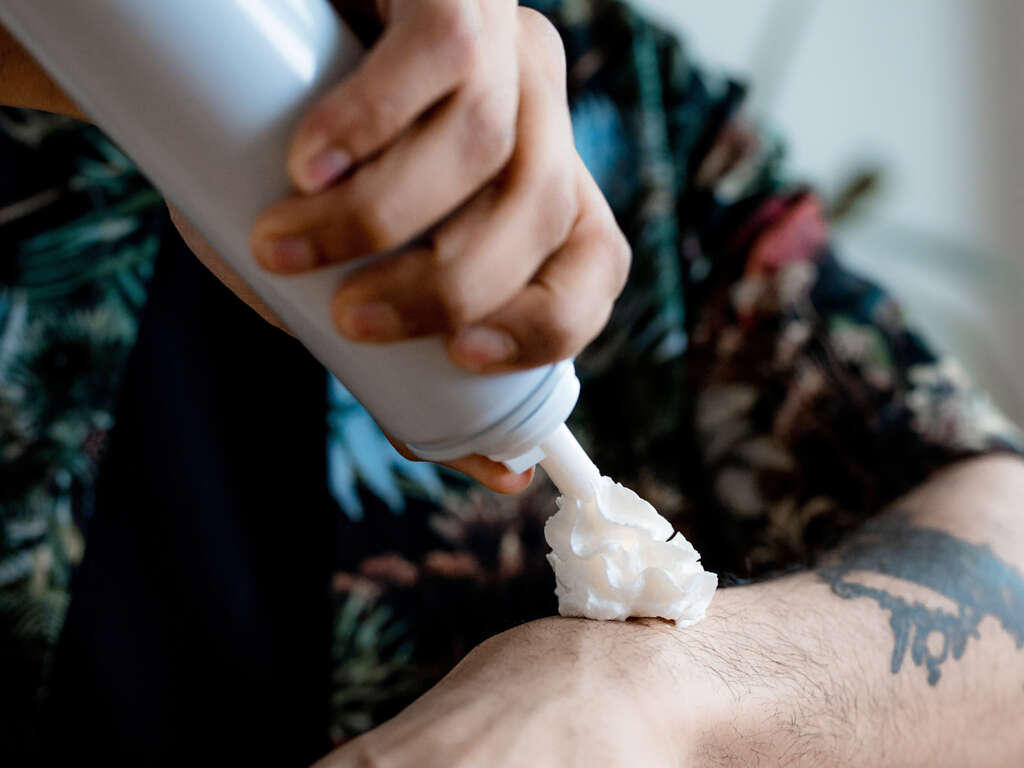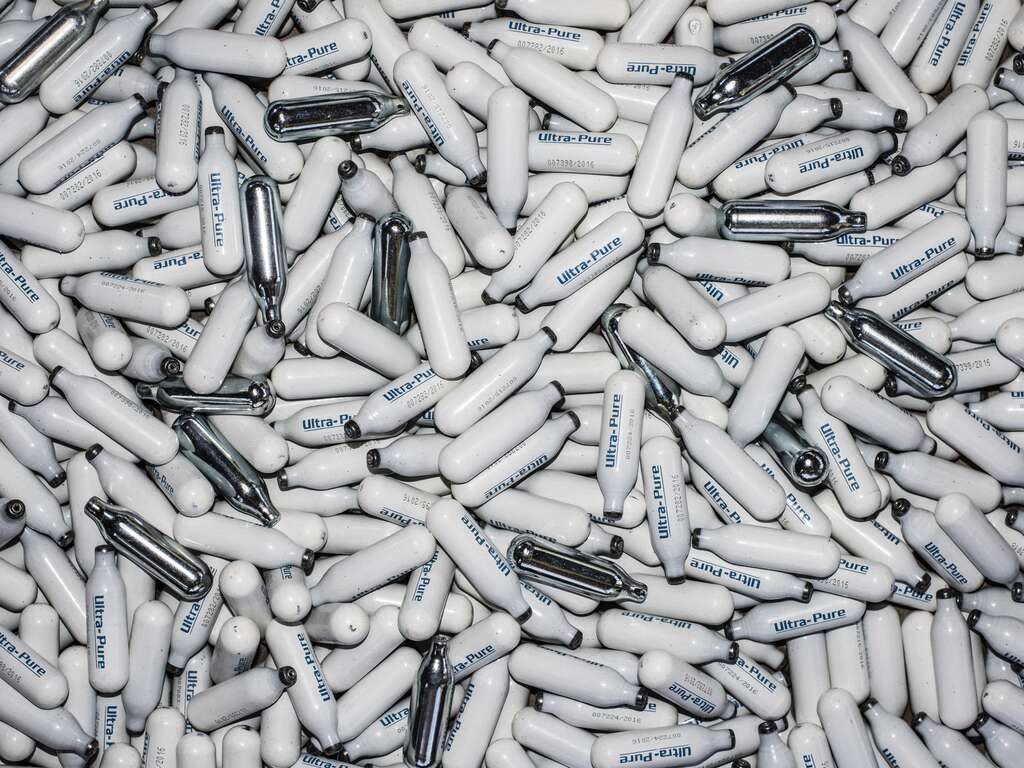What is Nitrous Oxide?

Nitrous oxide (N2O or dinitrogen monoxide) is a colorless gas with a slightly sweet smell and taste. Also known as laughing gas or “nos,” nitrous oxide has potent pain-relieving and anti-anxiety properties.
Nitrous Oxide Can Be Used as a Sedative
Nitrous oxide is commonly used as a sedative or general anesthetic by medical professionals for minor surgeries and dental procedures to calm patients.
Nitrous Oxide is a Dissociative Anesthetic
Nitrous oxide is classified as a dissociative anesthetic due to its ability to induce a sense of floating or dissociation of the mind and body, distorted perceptions, and occasional visual hallucinations.
These effects can prove useful in providing analgesia or pain relief. However, these effects are also the reason people abuse nitrous oxide, contributing to its growing popularity as a recreational drug.
Growing Nitrous Oxide Abuse
Recreational use of nitrous oxide is not new. In fact, it has been around since the gas was first synthesized in 1772, long before it was used in medicine. By the 1800s, nitrous oxide inhalation had become a form of public entertainment at high-society parties.
Nitrous oxide misuse has continued into the modern day, especially among medical and dental professionals. According to a 1979, approximately 20% of medical and dental students had used nitrous oxide recreationally.
Over the past decade, the growing popularity of nitrous oxide inhalation, especially among adolescents and young people, has led to a spike of nitrous oxide misuse and “whippit” or “whippet” abuse.
In 2012, the Global Drug Survey revealed that almost 50% of respondents from the U.K. had used nitrous oxide recreationally.
In 2014, more than 38% of U.K. young adults and over 29% of American youths reported having used nitrous oxide in their lifetime. In 2016, more than 11 million Americans were reported to misuse nitrous oxide.
The increase in nitrous oxide abuse in recent years is partly attributed to its wider and easier availability. Aside from being used for medical purposes, nitrous oxide can also be legally bought and sold at an affordable price due to its use in making whipped cream.
What Are Whippits?

Whippits,” sometimes spelled “whippets,” is a slang term popularized by adolescents and younger adults for the small canisters that nitrous oxide comes in. The gas is also known as “nangs,” “hippy crack,” “buzz bomb,” and “balloons.”
According to the Substance Abuse and Mental Health Services Administration (SAMHSA), whippits are one of the most popularly abused inhalant drugs, surpassing gasoline, spray paint, and lighter fluid in terms of widespread use. The average age range of those who misuse and abuse whippits is from as young as 12 years old to as old as 26 years and up.
Whippets and Whipped Cream Connection
Whippets canisters are sold as whipped cream aerosol chargers but are misappropriated for recreational drug use. These pressurized cartridges are filled with around eight grams of nitrous oxide and were originally used as a propellant to dispense the cream. They can be bought online or over the counter for reusable whipped cream dispensers, such as those used in cafes.
Commercial whipped cream cans also come with these cartridges, meaning that people seeking the euphoric high of the drug can easily buy these bottles and remove the gas canisters. This makes nitrous oxide easily accessible, even for younger individuals with limited money.
Whippets – Inhaling Nitrous Oxide
According to the National Institute on Drug Abuse (NIDA), there are two ways whippets or nitrous oxide is used — either directly or indirectly.
Using nitrous oxide straight out of the pressurized canisters.
One method is using it straight out of the pressurized canisters. Some people inhale nitrous oxide directly through the canister opening or by opening using devices called “crackers.” Inhaling the gas directly this way is both more difficult and more dangerous than other methods.
Since the canister is pressurized, the nitrous oxide leaves at a rapid rate. This can lead to the gas rushing into the person’s lungs and cause damage. Exiting the canister at high speeds also lowers the temperature of the gas, making it extremely cold. If inhaled immediately and at large amounts, this can potentially cause frostbite.
Putting nitrous oxide into another container
Another method is by letting the gas out into another container and inhaling it from there. People who abuse or use nitrous oxide recreationally sometimes use cans, though more prefer to use balloons, hence the slang term “balloons” for the drug.
Users inflate balloons with nitrous oxide from the pressurized cartridge, mitigating both the speed and the coldness of inhaling it directly. While inhaling nitrous oxide is not safe, this is a much safer method than direct inhalation.
Transferring the gas into a balloon not only lets the laughing gas warm up but also stops it from quickly forcing its way into the lungs. Additionally, using the balloon gives the person greater control over how much nitrous oxide to inhale at a time and allows for mixing nitrous oxide with other inhalant drugs.
Legality of Whippits
It is legal to possess nitrous oxide, both in the U.S. and in the U.K. Moreover, in the U.S., possession of the gas does not fall under the purview of the Drug Enforcement Administration (DEA). It is only regulated by the Food and Drug Administration (FDA).
Possession of nitrous oxide with the intent to sell, particularly for its euphoric or psychoactive effects, has been illegal in the U.S. since 2016. Even so, since laughing gas is used in medical settings and in the production of bottled whipped cream, there are no laws regarding banning or stopping its distribution.
The pressurized cartridges may have a high potential for abuse and harm, but they are still legal as they are technically safe when used as originally intended.
Limits on its sale and use vary by state. Some states limit or ban distribution to minors or set caps on how much can be sold without a license. Other states, such as California, take a harder stance and consider purposeful inhalation of nitrous oxide a criminal offense.
How Whippits Affects the Body and Brain

Whippits primarily affect the brain and the central nervous system. When nitrous oxide is inhaled, the gas reaches the brain within seconds because it quickly dissolves and passes into the bloodstream. The fast-acting quality is one of the reasons why laughing gas is commonly used as an anesthesia or for pain relief.
Experts have yet to reach a definitive conclusion on the exact way that nitrous oxide works and affects the body. However, findings suggest the following:
Nitrous oxide blocks
Nitrous oxide blocks the GABAa receptors’ neurotransmitters, which results in its anti-anxiety effects.
Nitrous oxide produces pain-relieving effects
Nitrous oxide produces its analgesic or pain-relieving effects by stimulating the body’s opioid receptors and triggering the release of norepinephrine, which restricts pain signaling.
Nitrous oxide produces a euphoric high
Nitrous oxide produces a euphoric high by triggering the release of dopamine and stimulating regions of the brain that comprise the “reward system” or reward pathway.
Although nitrous oxide may have medical benefits, it is still a highly dangerous drug when consumed frequently and in large amounts, making substance addiction treatment important for those who struggle to stop using it. Without the support of a treatment provider and/or a treatment center, nitrous oxide use may even lead to death.
Like other inhalants, the drug slows down brain activity and the body’s reaction time. It does so by cutting off or limiting oxygen supply to the brain, resulting in lightheadedness and a calm yet euphoric high or rush.
The lightheaded feeling depresses all other sensations, especially pain, hearing, and touch. It does so by curbing some of the normal functions in the brain’s emotional centers as a direct effect of the limited oxygen to the brain.
Immediate Side Effects of Nitrous Oxide

Whippit or nitrous oxide abuse causes both short-term and long-term effects. The effects and risk factors of nitrous oxide misuse are not limited to psychological or mental health — it can also greatly impact physical health. Inhalant abuse of nitrous oxide can cause some to become physically dependent.
Immediate or short-term effects people may experience after they misuse nitrous oxide include:
- Euphoric high
- Calm or peaceful feeling
- Lightheadedness
- Dizziness
- Headache
- Confusion
- Airiness
- Muscle relaxation
- Poor balance
- Lack of overall coordination
- Injuries from falling
- Fuzzy eyesight
- Nausea
- Vomiting
- Slurred speech
- Tingling feeling
- Fatigue or weakness
Serious short-term effects of nitrous oxide may include:
- Hallucinations
- Delusions
- Seizures
- Sudden heart failure
These effects may present themselves not only following intentional and repeated whippit misuse but also after careful administration of nitrous oxide in a medical setting. Whippit misuse also has additional risks, like frost burn or internal tissue frostbite due to the cold temperature of the gas upon exiting the pressurized container.
The intensity of these short-term side effects may vary depending on the amount of inhaled nitrous oxide, purity of the drug, presence of other addictive substances, and individual constitution or overall health, such as the user’s weight and height.
Risks of Prolonged Whippit Abuse
Long-term effects of nitrous oxide abuse carry even greater health risks and dangers. Some of these severe effects can include:
- Vitamin B12 deficiency
- Low blood pressure
- Asphyxia or oxygen deprivation
- Severe brain damage
- Severe nerve damage, especially to the central and peripheral nervous system
- Anemia
- Immune disorders
- Liver and kidney damage
- Lung damage
- Hearing complications or loss
- Vision problems
- Bone marrow damage
- Limb spasms
- Weakness in the arms and legs
- Temporary loss of motor control
- Incontinence
- Tinnitus or buzzing in the ears
- Heart rate fluctuations
- Heart dysfunction
- Memory problems
- Weakened immune system
- Paranoia
Prolonged nitrous oxide leads to vitamin B12 deficiency, which can cause irreversible brain damage, such as demyelination or damage to the protective cover (myelin sheath) of the brain.
Nitrous oxide addiction among young people also brings unique risks such as delayed behavioral development. Those with nitrous oxide addiction may also pass on the adverse effects to unborn children, resulting in birth defects.
Are Whippits Addictive?

Yes, but even though the effects of nitrous oxide are fast-acting, it can take a long time for a person to develop dependence or addiction to whippits, especially when compared to other inhalants.
Moreover, unlike other drugs like cocaine or methamphetamine, whippits do not contain physically addictive properties. This means that should a person choose to go cold-turkey over whippits or nitrous oxide, they would not experience any physical withdrawal symptoms.
Addictive Effects of Whippits
The addictive effects of whippits are due to the euphoric rush it produces. The feelings of euphoria can greatly affect the brain’s reward center and cause people to have a psychological dependence to feeling and the substance. This means that the withdrawal symptoms of whippits are limited to intense cravings for the drug.
The short-lasting effects of whippits also play a role in causing addiction. Since the effects are short-lived, people are more likely to take multiple doses or increase the amount of nitrous oxide they inhale over a short period of time, which paves the way for a psychological addiction and dependency.
Mixing Whippits with Other Drugs
Individuals who use whippits generally transfer the gas into a balloon to make it easier to use with other drugs. However, it is not advisable to mix whippits or nitrous oxide with other substances.
Using whippits together with any other controlled substance, whether it is other drugs or alcohol, poses significantly more health risks than pure nitrous oxide alone. Doing so can potentially put greater pressure on the heart, which may lead to a steeper drop in blood pressure and an unpredictable heart rate.
Reports note that whippits may multiply the effects of LSD and psilocybin or hallucinogenic mushrooms, though these are yet to be proven.
Addiction Treatment for Whippit and Nitrous Oxide Abuse

As with other forms of drug abuse or substance addiction, there are treatment options available for individuals struggling with whippit addiction or nitrous oxide abuse. If you or someone you love is misusing nitrous oxide or is already suffering from whippit addiction, it is best to seek treatment promptly.
La Hacienda Offers a Wide Variety of Addiction Treatment Services
La Hacienda Treatment Center offers a wide variety of addiction treatment services for many substance abuse problems, including whippit abuse. Our team offers compassionate and personalized care to help ensure steady improvement and full recovery from the use of nitrous oxide.
If you or a person you know is interested in starting recovery at a rehab facility for nitrous oxide abuse or other substance use disorders, contact La Hacienda by phone or begin the admission process online today to learn more about your treatment options.






